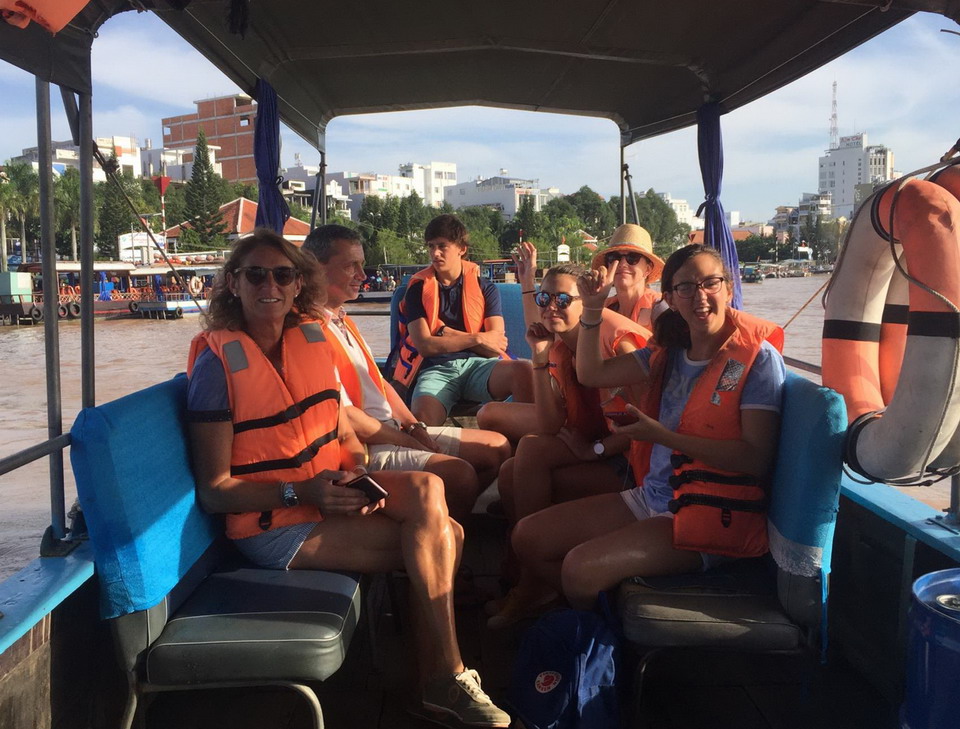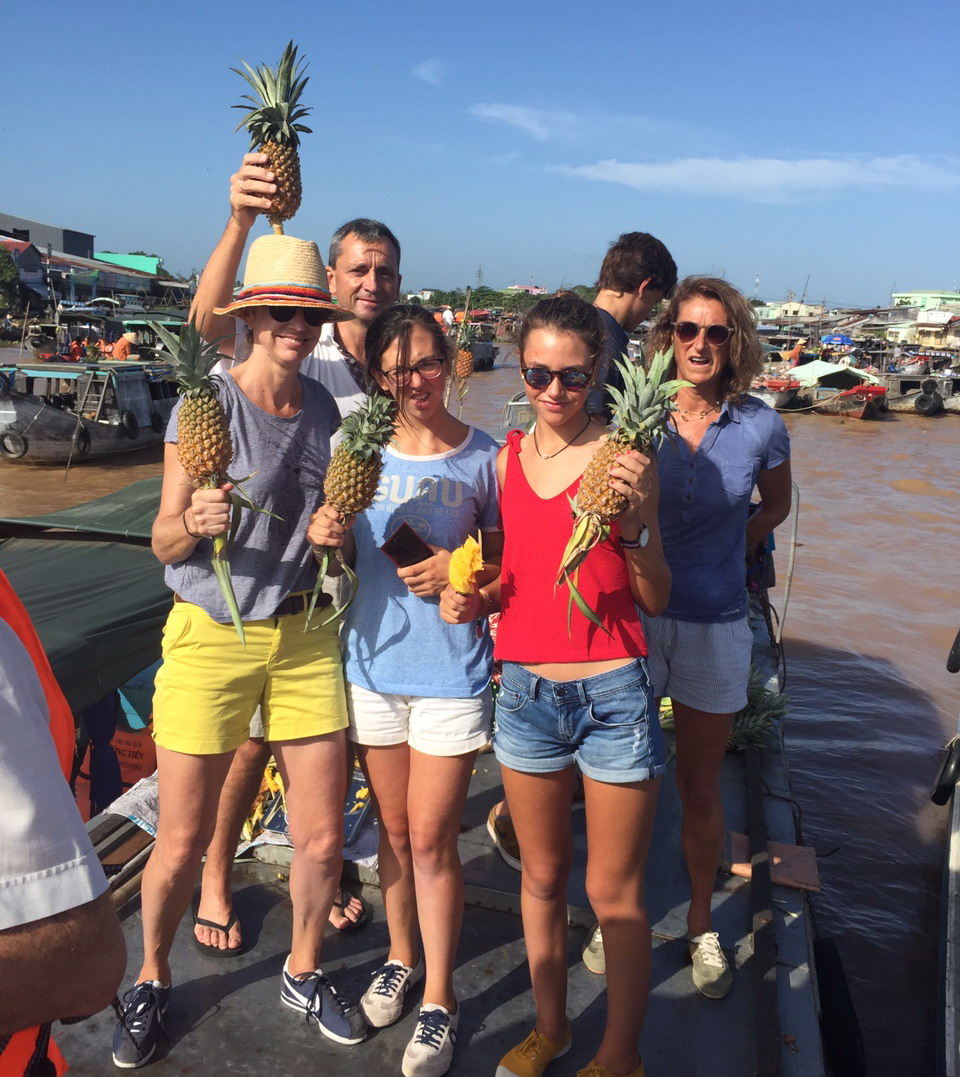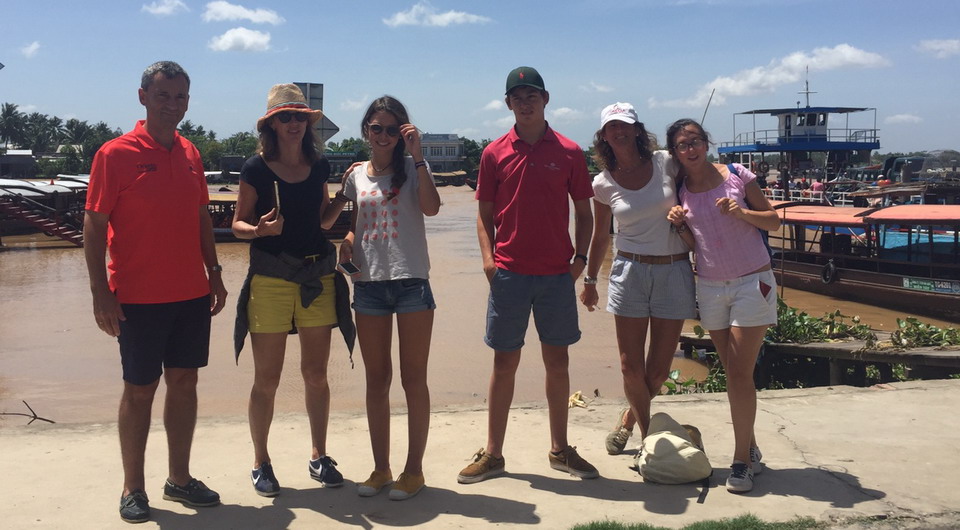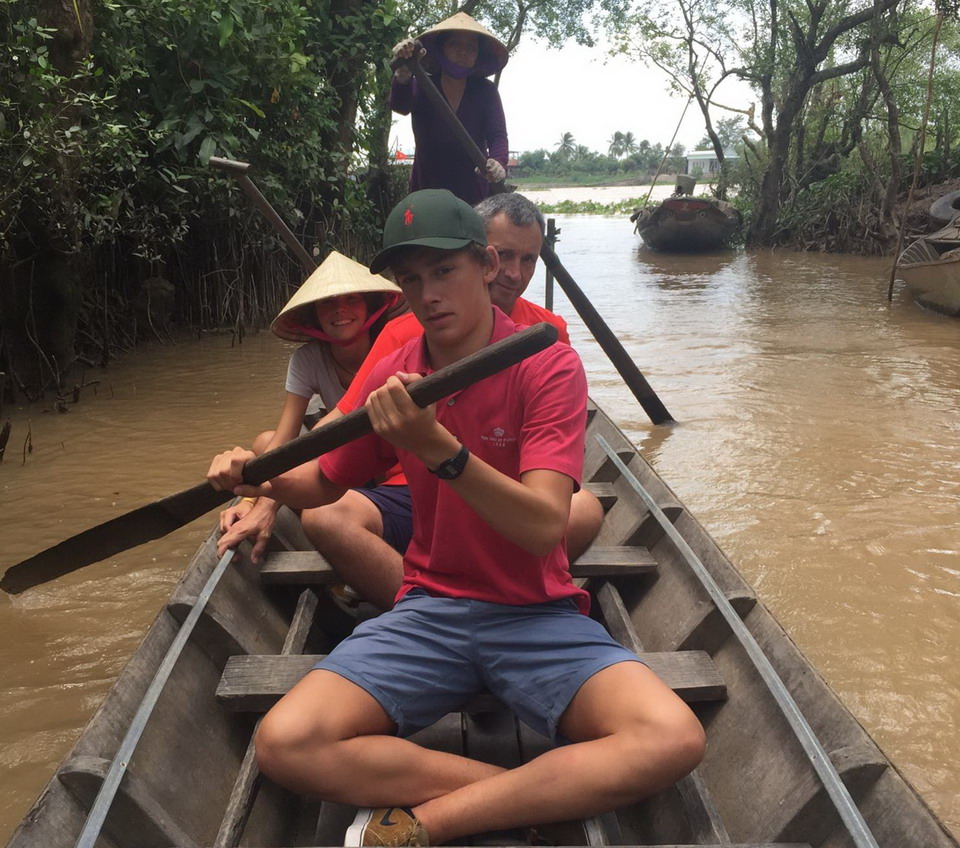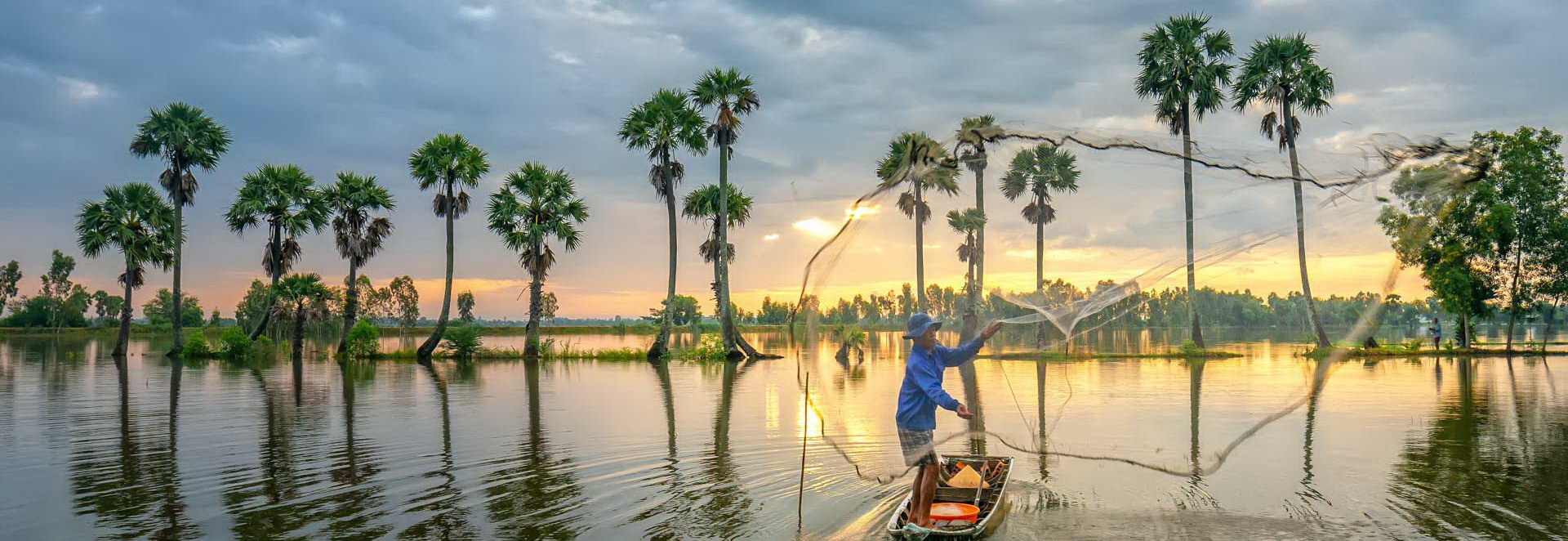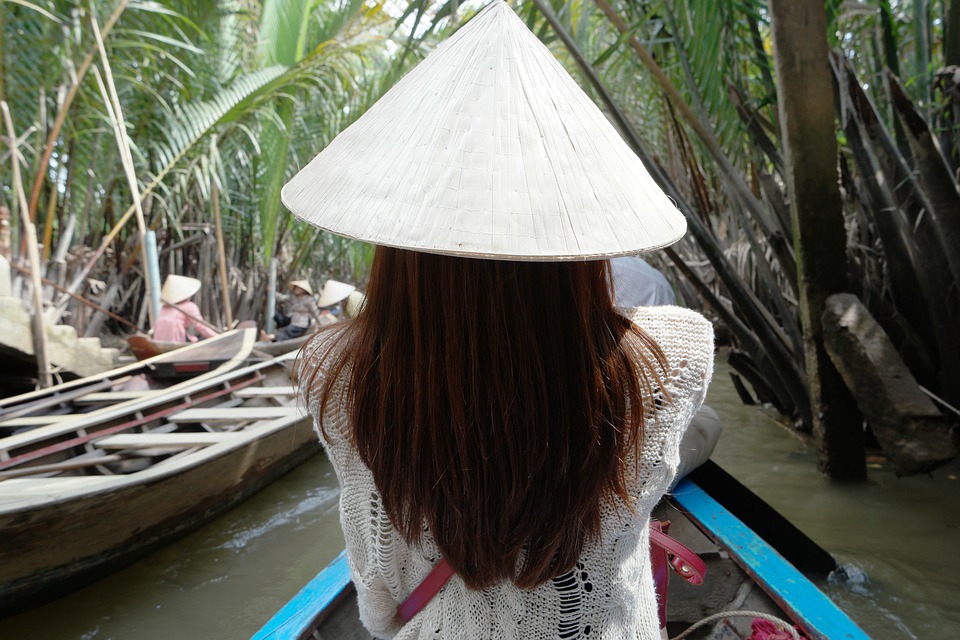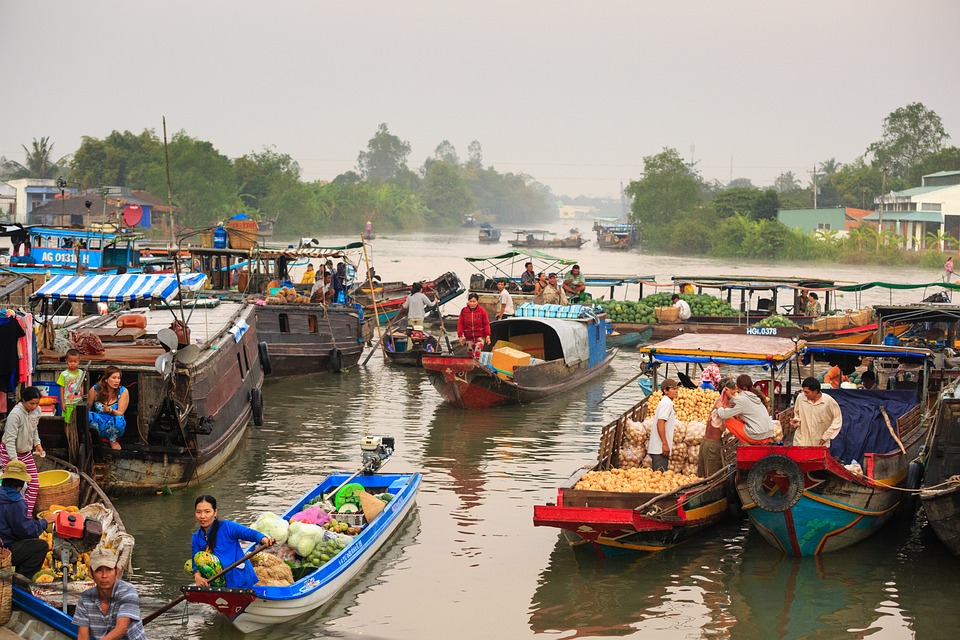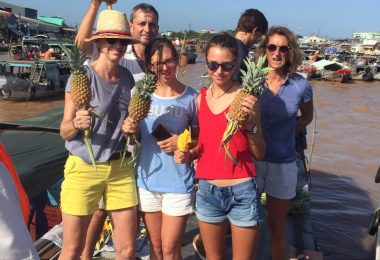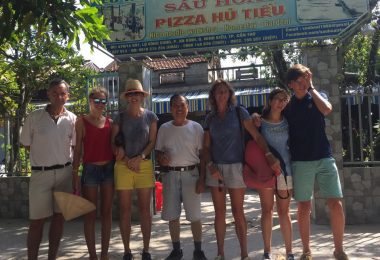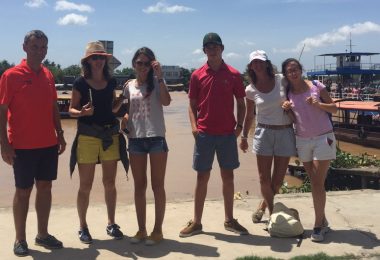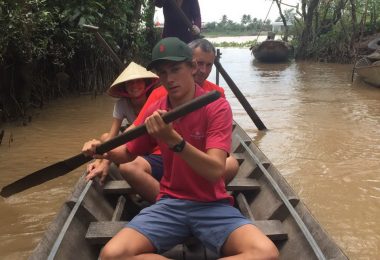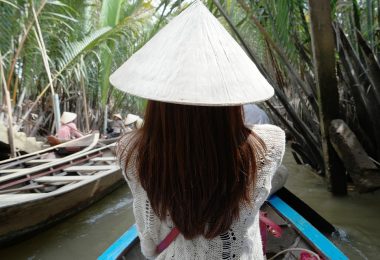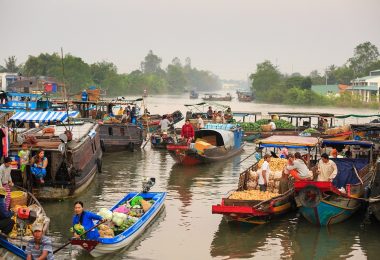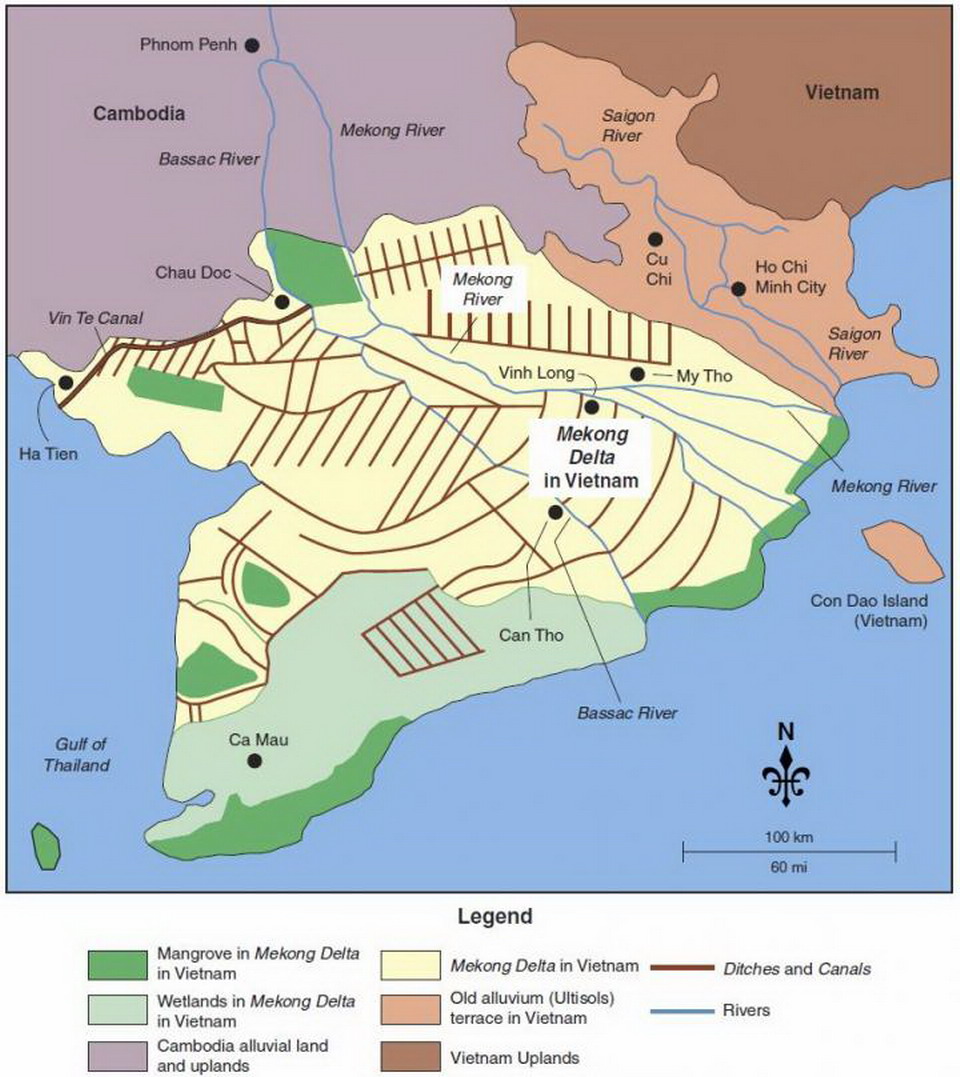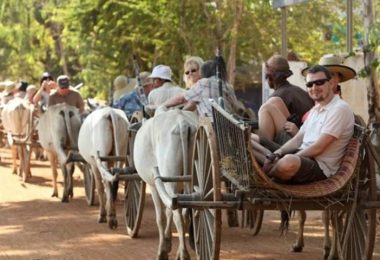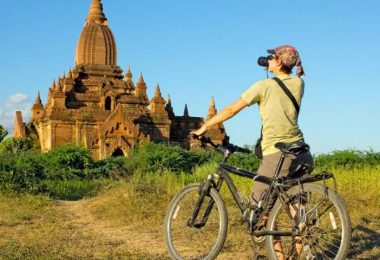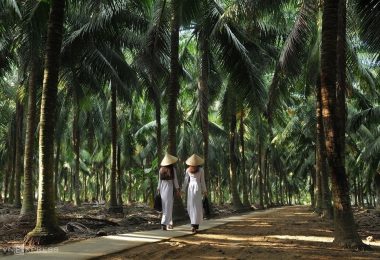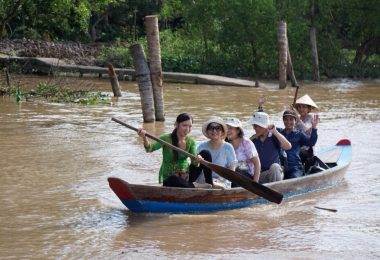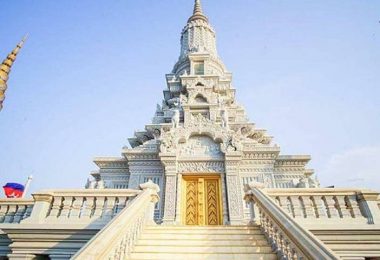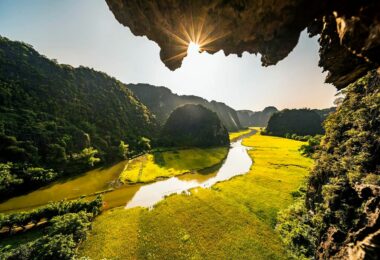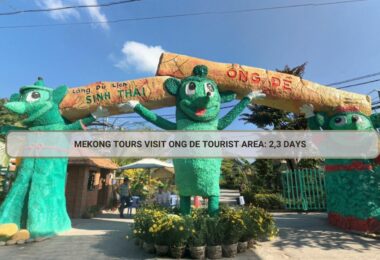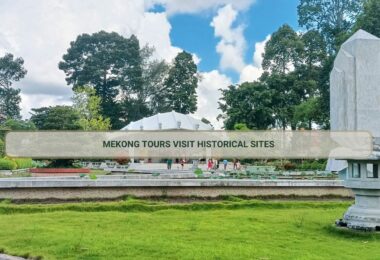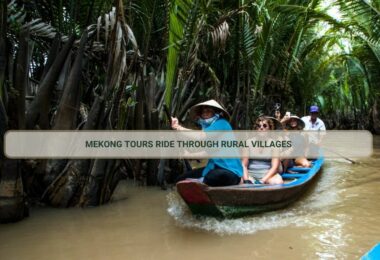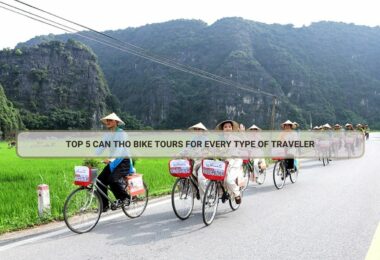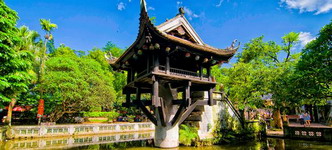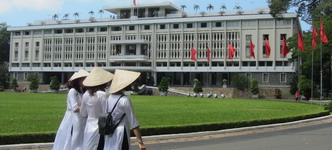The Mekong Delta represents the Western region or Miền Tây in Vietnam and is an expanse area full of life that captures the essence of village life and natural beauty. The Mekong Delta is feared for its second-to-none rivers, marshland, and islands; it provides guests with an eclectic mixture of cultural and natural treasures, from 100-year-old Buddhist temples to forests brimming with rare wildlife. The Mekong Delta, with its bustling floating markets, fruit orchards, sugar cane groves, and hundreds of villages, is the perfect suggestion for many of you who are busy working on international plane tickets. If you’re a nature lover or a cultural explorer, or you love history, your trip to the Mekong Valley will stay with you forever. Just how long to spend in Mekong Delta to soak up its essence? So with your one, nice, egg which should you prepare?
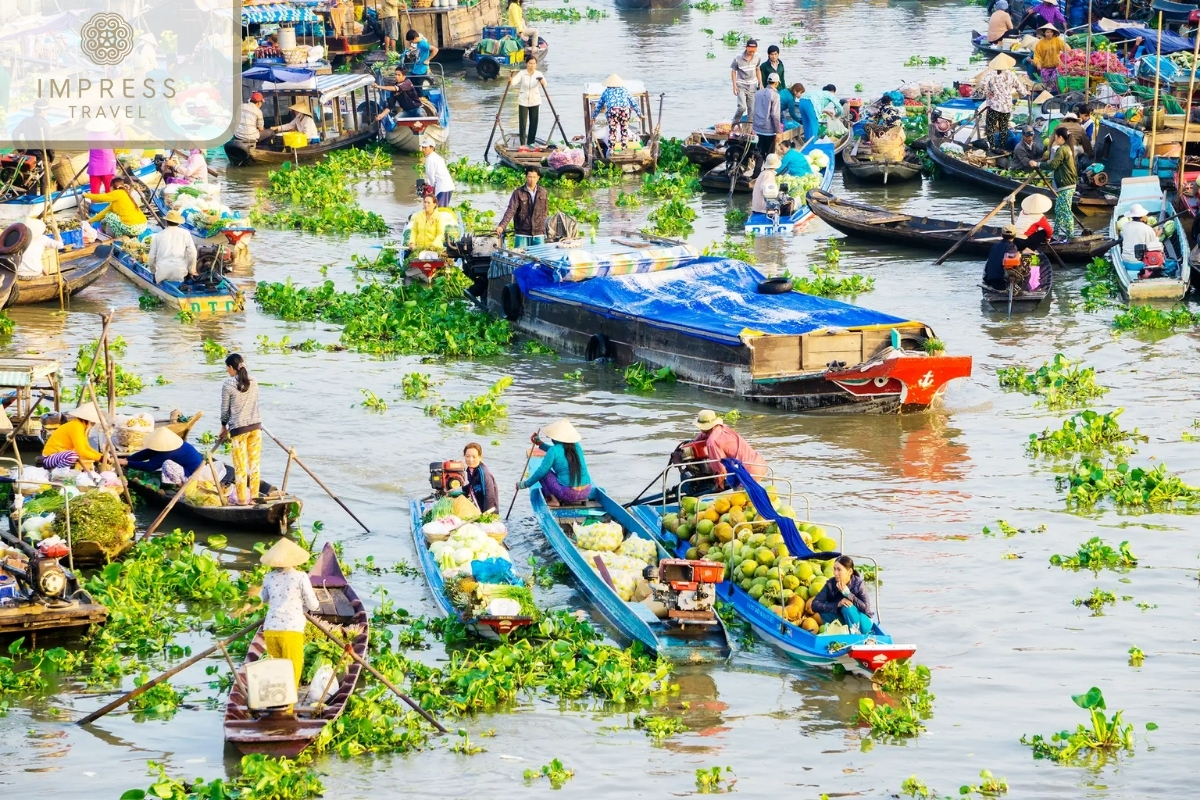
Floated Market
Overview of the Mekong Delta
The Mekong Delta occupies 40,500 square kilometers of land, extending inward from the southwestern tip of Vietnam into Cambodia. Known as the “rice bowl" for all the rice paddies, I wound up in the very fertile Mekong Delta. It is worth noting that major cities such as Can Tho, My Tho, and Chau Doc are the key gateways for those who want to discover the delta and its various attractions.
Floating markets are one of the most famous aspects of the Mekong Delta. Cai Rang and Cai Be are notorious, with fresh fruit and vegetables passing from trader boats to make-shift stalls. A seasonal market provides a colorful and lively snapshot of local life and is a worthwhile destination for any traveler.
Fruit orchards and gardens, where you can try mangosteen, rambutan, and durian, the king of fruits, also are located in the delta, Quiet creeks with water and coconut hiding away make it ideal for riding a boat around. It is also the place where you find a lot of cultural relics such as traditional Vietnamese houses, temples, and craft villages where you will see the local people with their hands.
Factors to Consider When Planning Your Visit
How long to stay in the Mekong Delta ranges, depends on a few different factors. Careful planning includes knowing about the following aspects of travel:
Travel Goals
What do you want to do while visiting here? Day trippers may be able to see the best and ho,p so,e good shots locally. If you want to experience the culture and nature to its fullest extent, I recommend you to stay there at least for a few days.
Budget
How much you can spend will have a major impact on your time. The Mekong Delta has accommodations to suit every preference and budget, ranging from homestays to five-star luxury. While meals and transport once inside the delta are pretty reasonably priced, the cost of guided tours, tours, and boat trips can mount up.
Time of Year
The region boasts a tropical climate, so it is seldom out of season, but you can be excused for feeling that depending on what season you visit, it can be a very different place. During the dry season (November – April) you can explore without the worry of endless rain, while the wet season (May – October) will bring with it a lush green landscape to witness, plus the added opportunity to experience the excitement of the “floating" Mekong as water levels rise.
Preferred Activities
There are everything from boat trips and cycling through the rice paddies in village lanes to visiting floating markets and perhaps local workshops. Make your itinerary based on your specific interests.

Fruit basket in the Mekong Delta
Suggested Itineraries
One-Day Trip
A one-day road trip to the Mekong Delta area is also a good way to explore the region for travelers who are on a tight schedule. Get a super early start from Ho Chi Minh City & head to Cai Be OR My Tho. In the morning you will walk through the floating market and go on a boat on the channels. Visit Local Workshop where you will see how people make coconut candy and rice paper. Take a last cycle around a village and visit a fruit orchard before you head back to the city.
Two-Day Trip
A two-day journey offers more leisurely exploration. On the first day, make a trip to the Cai Be floating market and then to the canals and local villages by boat. Leave in the early afternoon for Can Tho where we will spend the night. On the morning of the second day, drop by Nga Nam Market, the longest and biggest market in Sideway Canal, and then head over to Cai Rang Floating Market, one of the big floating markets in the Mekong Delta, and visit hundreds of boats packed the market to sell fruits, flowers, and vegetables. Without reaching the end of the country, this schedule will make you understand more about the lives of the locals, and feel the peacefulness of the place.
Three-Day Trip
Three days provides a more exhaustive experience. Take out the activities covered in the Two-day itinerary. Head to Chau Doc on the third day to visit the Tra Su Cajuput Forest wetland area which has many birds to see. You can also visit the breaks of the mountain on cham village enjoy the top of the mountain see the long beach and learn about the culture and traditions of the Cham people. This itinerary is a much longer route such that it allows you to embrace the endless possibilities of experiences that the Mekong Delta can bring to you.
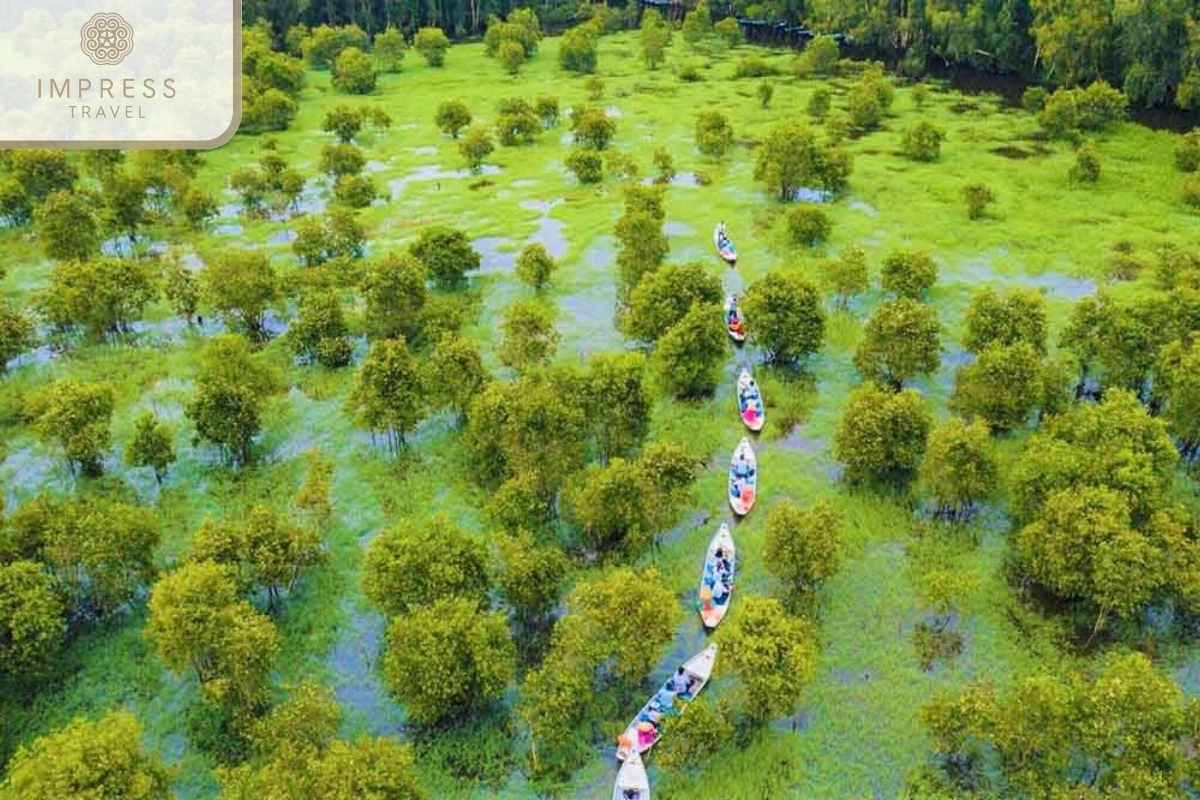
Tra Su Cajuput Forest
Unique Experiences in the Mekong Delta
The Mekong Delta offers a wealth of experiences that rise above the traditional sightseeing circuit. Try a homestay to see local hospitality and for daily experience. Traditional music and performances like the Dai Ca Tai Tu, UNESCO intangible cultural heritage. Join tours and do farming or pick fruits for the experience.
Practical Tips for Travelers
If you ever make a trip to the Mekong Delta, just remember these tips to reduce your time:
Best Time to Visit
The Mekong Delta is best visited during the dry season, which lasts from November to April. This is a time when the weather is mild, with less humidity and relatively less rain. But the wet season from May to October has its appeal, with magnificent greenery and the chance to see the delta in full high-water mode.
Transportation Options
Getting around the Mekong Delta Many of those visitors will rent a scooter or bicycle to get around the villages at their leisure.
Accommodation Recommendations
There is accommodation to suit all budgets in the Mekong Delta Staying with locals is a vital part of a travel experience. Those who are willing to splurge will find a handful of mid-range hotels and luxury resorts in bigger towns such as Can Tho and Chau Doc. During the high tourist periods, it is recommended to book your stay beforehand.
Safety Advice
Be wary of your bags and belongings when moving through the Mekong Delta, especially when you are on boats or in crowded markets. It is also strongly recommended that nighttime interprovincial travel must also be avoided as there may be threats on roads. However, insects like mosquitoes can sometimes be a problem, particularly in more rural or wooded areas, so always take bug spray.
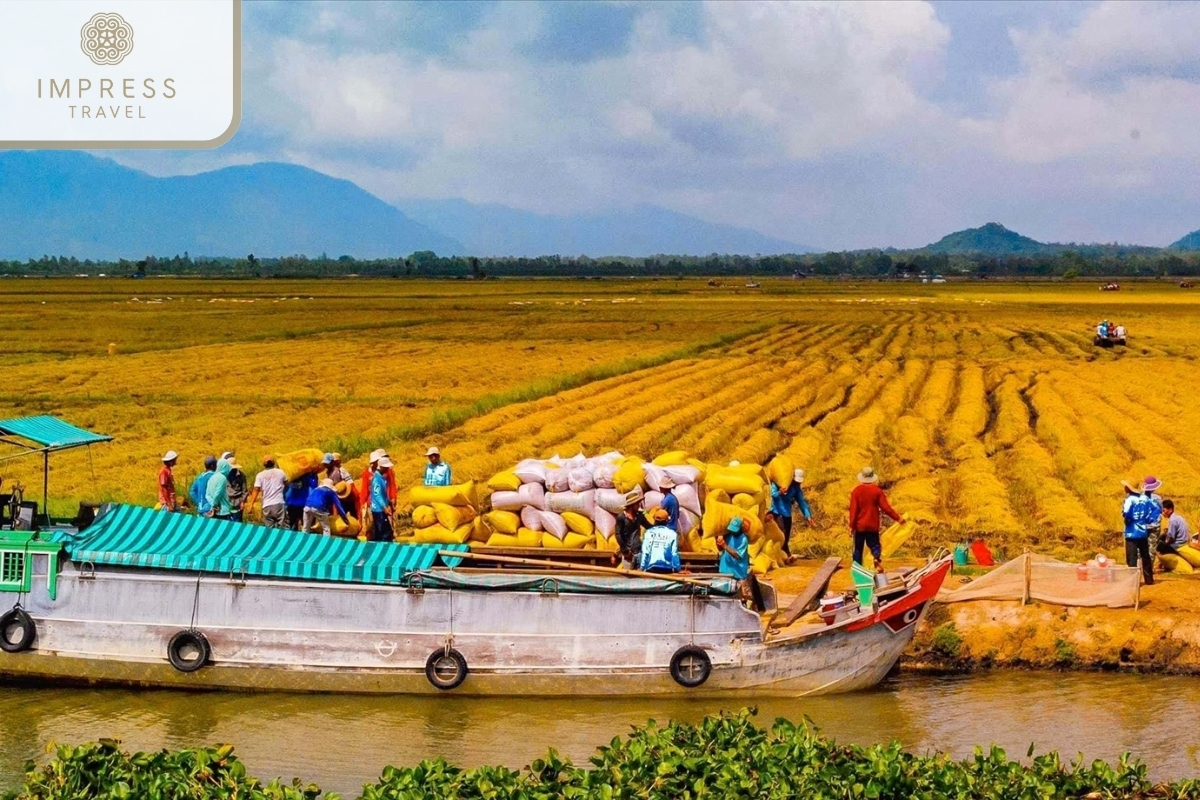
Harvesting rice in the Mekong Delta
Conclusion
To sum it up there are various encounters that one can do while exploring the Mekong Delta that make it a loose and journey care experience. A few hours or a few days, and anywhere between, there is plenty to part-take in at Basantapur.
Conclusion So, how long to spend in the Mekong Delta? During this timeframe, there is also a chance to visit the main sites including the floating markets of Cai Be and Cai Rang, to stay with people in their homes, listen to traditional music, to get involved in the landscape and local life. Three days are perfect to experience the colorful culture, various food, and tranquil nature of the Mekong Delta.
Ready to explore the Mekong Delta? Book your Mekong tour with IMPRESS TRAVEL for an enriching and seamless experience. Our expert guides and comprehensive itineraries ensure you won’t miss any highlights. Contact us today at mekong@impresstravel.com or call our hotline at +84.912 379 189 – Mr. Alex, and start planning your adventure!


































